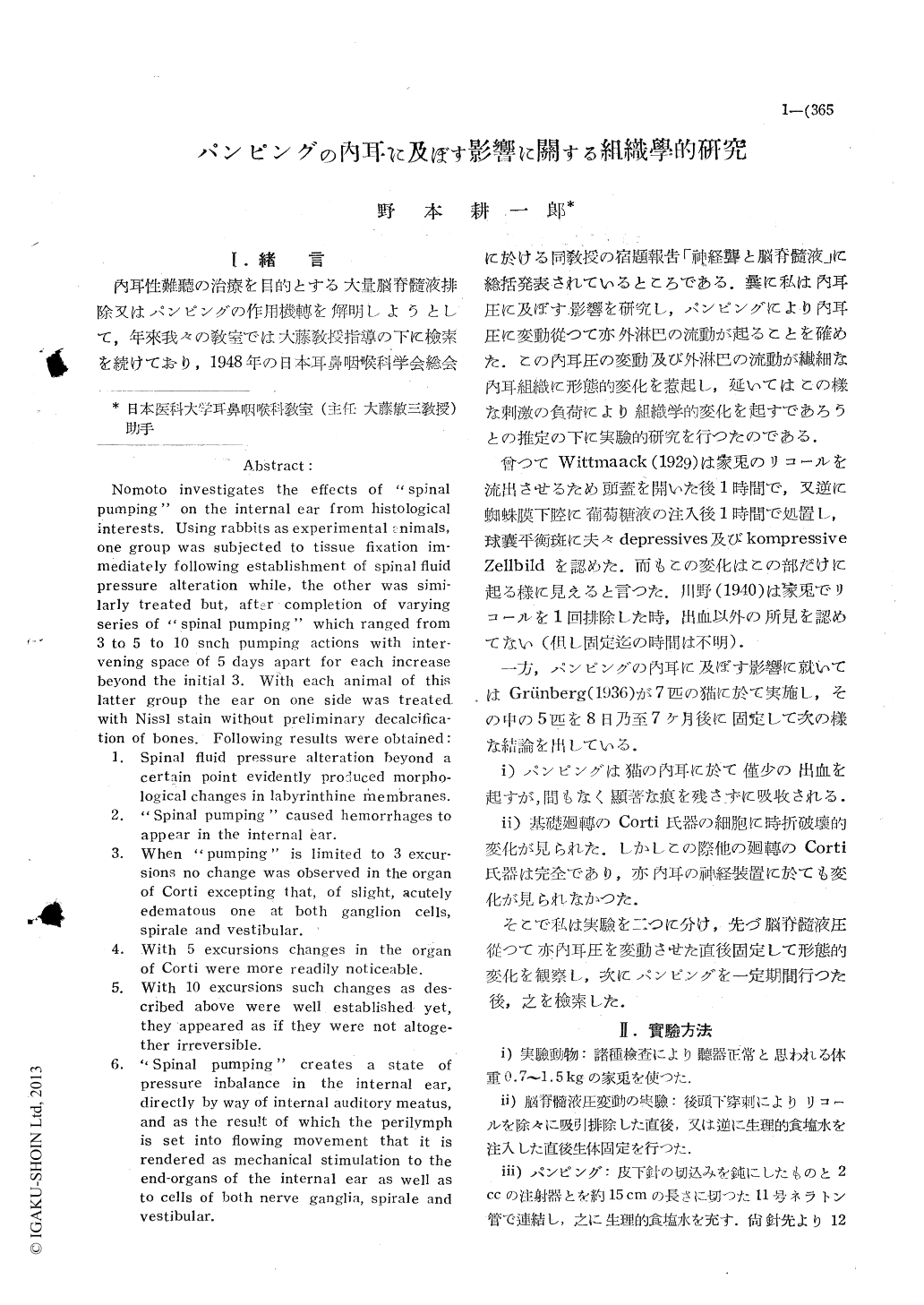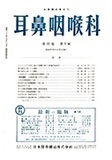- 有料閲覧
- 文献概要
- 1ページ目
Ⅰ.緒言
内耳性難聽の治療を目的とする大量脳脊髓液排除又はパンピングの作用機轉を解明しようとして,年來我々の教室では大藤教授指導の下に檢索を続けており,1948年の日本耳鼻咽喉科学会総会に於ける同教授の宿題報告「神経聾と脳脊髓液」に総括発表されているところである.曩に私は内耳圧に及ぼす影響を研究し,パンピングにより内耳圧に変動從つて亦外淋巴の流動が起ることを確めた.この内耳圧の変動及び外淋巴の流動が纎細な内耳組織に形態的変化を惹起し,延いてはこの樣な刺激の負荷により組織学的変化を起すであろうとの推定の下に実驗的研究を行つたのである.
曾つてWittmaack(1929)は家兎のリコールを流出させるため頭蓋を開いた後1時間で,又逆に蜘蛛膜下腔に葡萄糖液の注入後1時間で処置し,球嚢平衡斑に夫々depressives及びkompressiveZellbildを認めた.而もこの変化はこの部だけに起る樣に見えると言つた.川野(1940)は家兎でリコールを1回排除した時,出血以外の所見を認めてない(但し固定迄の時間は不明).
Nomoto investigates the effects of "spinal pumping" on the internal ear from histological interests. Using rabbits as experimental animals, one group was subjected to tissue fixation immediately following establishment of spinal fluid pressure alteration while, the other was similarly treated but, after completion of varying series of "spinal pumping" which ranged from 3 to 5 to 10 snch pumping actions with intervening space of 5 days apart for each increase beyond the initial 3. With each animal of this latter group the ear on one side was treated with Nissl stain without preliminary decalcification of bones. Following results were obtained:
1. Spinal fluid pressure alteration beyond a certain point evidently produced morphological changes in labyrinthine membranes.
2. "Spinal pumping" caused hemorrhages to appear in the internal ear.
3. When "pumping" is limited to 3 excursions no change was observed in the organ of Corti excepting that, of slight, acutely edematous one at both ganglion cells, spirale and vestibular.
4. With 5 excursions changes in the organ of Corti were more readily noticeable.
5. With 10 excursions such changes as described above were well established yet, they appeared as if they were not altogether irreversible.
6. "Spinal pumping" creates a state of pressure inbalance in the internal ear, directly by way of internal auditory meatus, and as the result of which the perilymph is set into flowing movement that it is rendered as mechanical stimulation to the end-organs of the internal ear as well as to cells of both nerve ganglia, spirale and vestibular.

Copyright © 1950, Igaku-Shoin Ltd. All rights reserved.


